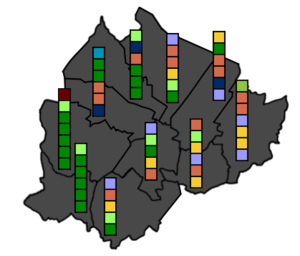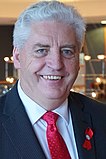Belfast City Council election, 2014
|
|
|||||||||||||||||||||||||||||||||||||||||||||
|---|---|---|---|---|---|---|---|---|---|---|---|---|---|---|---|---|---|---|---|---|---|---|---|---|---|---|---|---|---|---|---|---|---|---|---|---|---|---|---|---|---|---|---|---|---|
|
|||||||||||||||||||||||||||||||||||||||||||||
|
All 60 council seats 31 seats needed for a majority |
|||||||||||||||||||||||||||||||||||||||||||||
|
|||||||||||||||||||||||||||||||||||||||||||||

Party Members from Each District Electoral Area
|
|||||||||||||||||||||||||||||||||||||||||||||
Elections to Belfast City Council were held on 22 May 2014 – on the same day as other local government elections in Northern Ireland – as part of the process of local government reform provided for in the Local Government Act (Northern Ireland) 2014.
The councils elected in the 2014 local elections across Northern Ireland operated in shadow form for one year, with the 26 councils which they replaced existing in parallel. The local government reorganisation and electoral administration is founded by the Local Government Bill.
This reform saw the Belfast City Council area expand from 51 to 60 wards. Expansion saw some areas along the western, southern and eastern fringes of Belfast incorporated into the city, with a total of 53,000 additional residents and 21,000 households transferred from bordering council areas. A total of 60 councillors were elected.
Data derived from the Council website.
Last update 6 January 2018.
Current composition: see Belfast City Council.
...
Wikipedia





